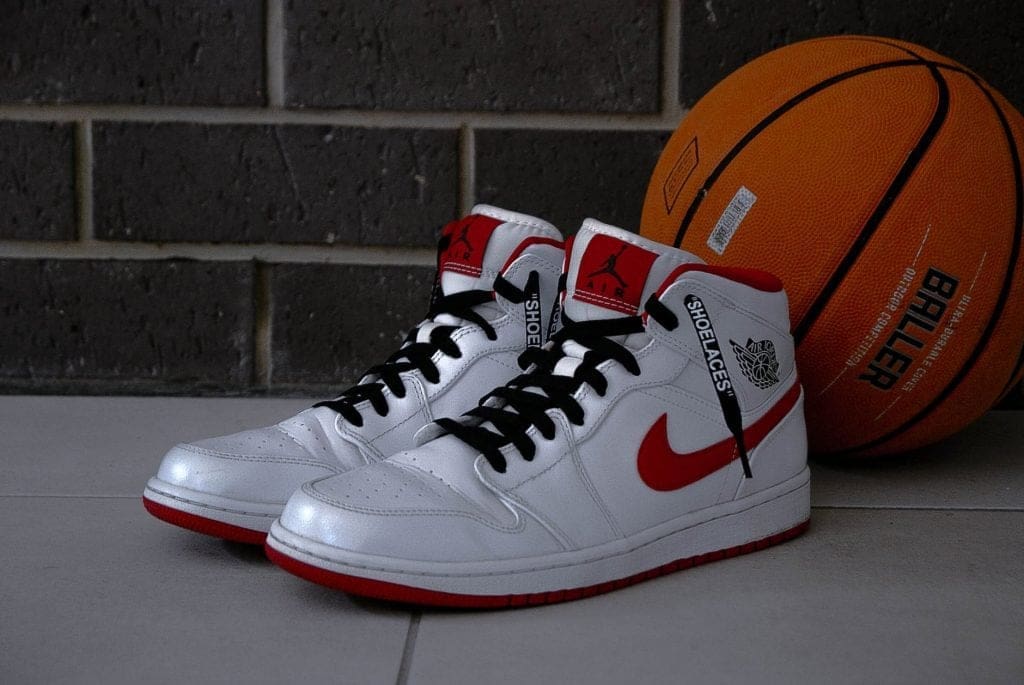Stories are fundamentally how humans understand the world. Every day has a beginning, middle, and end. Every encounter. Every desire. Every relationship. Our lives. Everything we experience is filtered through what was, what happens, and what will be. The predominant way this has been translated into advertising and marketing is either by crafting a story around the product, think Bud Light’s Corn Syrup saga, or as a completely separate story with the product bolted on, think Geico. Every once in a great while, someone tells the story of the product in such a way that catapults sales.
What does real engagement based on a good story look like. Can you give some examples?

One that comes to mind is the brilliant work of Jeff Gorman with the first Air Jordan TV commercial. This ad told the story of what was actually happening with the product and illustrated it in such a simple way that helped catapult the Air Jordan 1 to insane levels of success – 3-4 million units sold when only 100,000 were projected by Nike. A recent example is from this year’s Super Bowl. We graded all the ads and the ones that received the highest score was T-Mobile’s texting spots. These weren’t praised by many in the community, but that didn’t stop them from breaking Taco Bell’s one-day sales record. What I see at work here is that the simplicity of a story grounded in reality, grounded in what the product actually does for people,THAT’S what drives engagement – if we’re defining engagement as the viewer USING the product or service being offered.
When you work with advertisers, what do you find the most challenging about crafting a story that is unique to them?
Reigning in the imaginations. It’s tempting to want to do some “outside the box” stuff. And I have to admit, I want to do that too. But for our clients, the best stories we can tell are the stories of what their products DO. The challenge is to figure out a way to do that with the maximum clarity and potency.
Tell us about Oxford’s proprietary technology Audiolytics and how does it improve the storytelling experience?
Audiolytics™ is the device by which we keep ourselves and the teams we work with grounded in reality. As many creatives have experienced it’s actually liberating to have boundaries for their creativity to flourish. That’s part of what Audiolytics™ provides. Audiolytics™ is a data-driven approach to creative that eliminates bias by adhering to a proven structure of 71 data points that allows Oxford Road to audit our client’s messaging, optimize it, and outperform the competition with every campaign. The 71-point formula is modeled after not only Aristotle’s Rhetoric but also Cialdini’s Influence, Maslow’s Hierarchy of Needs, and a host of other ancient and modern sources. We continually update and combine the best of all those sources with the performance data we collect, and the countless successful ads we measure, to establish and maintain proper weighting for the 71 data points we’ve identified. This allows us to measure and finetune each client’s message and provides the “sandbox” in which every creative, account manager, and executive involved can play.
You have worked for a lot of consumer brands and campaigns such as Hulu and Lyft. What excites you the most about creativity and storytelling?
Finding a way to express what the product or service does in the clearest and most potent way. Fundamentally the advertisers need people to use their products and services. I think of Coca-Cola. Their earliest ads proclaimed how Coke was “For Headaches and Exhaustion”. You can chart over time how far the brand distanced itself from explaining the material benefits of a Coke with their tagline and moved toward communicating the abstract emotions that are contained within the concept of Coke as a brand, “Open Happiness”. No longer are customers using the commercials to evaluate the pros and cons of a Coke in comparison with other sodas, or any other beverage for that matter. Everyone knows Coke. In 2018, 1.9 billion servings of Coke were consumed every day by people in over 200 countries. They are experiencing a feeling associated with the brand. They are feeling connected to something larger. The reason “Taste the Feeling” is a meaningful slogan is because it was 130 years in the making. And yet, the ads all feature people drinking Coke. To this day Coke is expressing what the product does in a clear and potent way.
What advice would you give to marketers on branding in the modern digital age?


Data can drown you, don’t outthink your common sense. Amazon gives people what they want, better and faster than anyone else. Look at their site, there are parts of it that still belong in the stone age of the internet. But who cares? Because it’s delivering the goods. How does the product or service you’re advertising do something for people better, faster, or cheaper? And I’m not just talking function. It can be that the product is designed better, so it gives people a sense of accomplishment. Or it can be that the company making the product does more good in the world, giving people fulfillment that they’re the highest and best version of themselves. Whatever it is, find that and shine a light on it in your advertisement.
Author Bio:
Stew Redwine is the Creative Director at Oxford Road. Stew makes the ads work, and has an impressive resume – from Hulu, to Dollar Shave Club, and Lyft, Stew has helped to craft the story that is necessary to understand the brand identity and what they stand for.
Featured Image by Falkenpost from Pixabay




